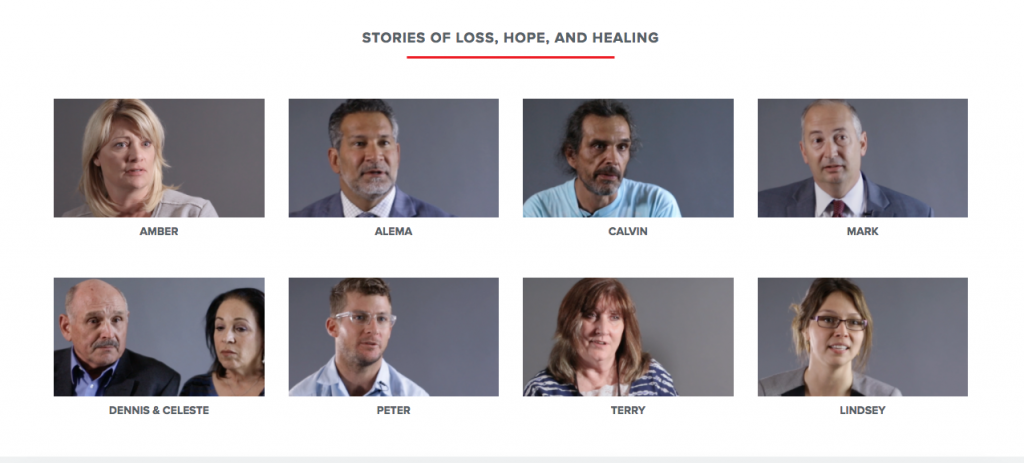
Up and down I-15 are billboards with photo illustrations showing opioid overdoses from heroin and from prescription medications.
“Yes, it is a bold campaign — a sad campaign. It’s real,” said Angel Stander, the prescription drug overdose prevention coordinator for the Utah Department of Health.
She has been at the center of planning the “Opidemic” campaign that launched Jan. 25, 2017.
“We wanted people to recognize prescription opioids were just as dangerous as heroin,” Stander said.
Stander worked with an ad agency to create the dramatic depictions seen on the billboards and in the campaign commercials.
The campaign makes use of startling images, but Stander said people have given her positive feedback about the campaign’s boldness because it shows the reality of prescription opioid overdose. Recovering addicts have told her the illustrations are “spot on.”
The campaign also has a website, and people can hear stories from people who have suffered from addiction and from losing friends and family to addiction.

One of those stories is Alema Harrington’s. Harrington is a former BYU football player and is a popular sports broadcaster. He’s also a recovering addict. He shares in his Opidemic video how his addiction started with Percocet.
There is a place for people to share their own stories on the website just below the video thumbnails, and Stander said she encourages people to share. She said she wants people to have a voice, to be able to share the pain that opioids cause.
“A big part of our campaign is stories. You’re not alone,” Stander said.
The Department of Health also provides patient brochures as part of the campaign. Stander said the brochures help teach people what opioid medications are. She said often people don’t know their prescriptions are opioids.
Common opioid prescriptions include Oxycodone, Hydrocodone, Codeine, Tramadol, Fentanyl, Hydromorphone, Meperidine, Methadone and Morphine.
Stickers clearly stating the dangers of opioids will be on all opioid prescription bottles beginning in April, according to Stander.
Another crucial aspect of the campaign is teaching people about Naloxone, a drug that can reverse opioid overdoses. Naloxone is available to the Utah public, and Stander said people should get Naloxone, especially “anyone at risk of overdosing and anyone at risk of witnessing an overdose.”
Katie McMinn, the communications manager for the Department of Health, said emphasizing Naloxone sets the Opidemic campaign apart from Utah’s opioid awareness campaigns in the past.
“We wanted to bring attention to the risks of abusing opioids and to also having Naloxone on hand,” McMinn said. “Naloxone is definitely something that was missing from the other campaigns.”
The campaign’s site answers several questions about using Naloxone. Training videos for administering Naloxone can be found here.
“We want people to feel empowered. It’s simple,” Stander said.
But before people can use Naloxone, they need to know what an overdose is, Stander said. Sometimes it looks like the person who overdosed is just asleep, she said, because overdoses are “really subtle.”
Stander believes the number of lives lost to opioids can be reduced, especially in Utah, but the solution will require efforts on multiple fronts: teaching people about the dangers, providing treatment and using safer prescription practices.
“I think we’re going to do it first from public awareness and from doctor education,” Stander said.




